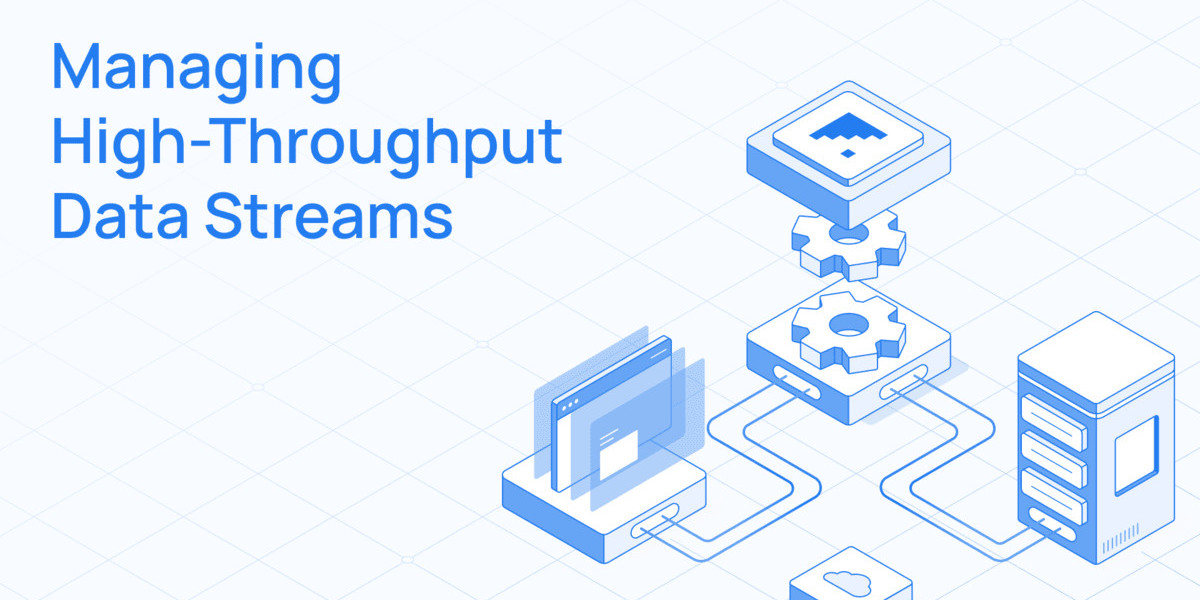Introduction
Modern enterprises increasingly operate in environments defined by continuous, high-volume event generation. Applications across industries — from financial services to connected vehicles, smart factories to media platforms — demand the ability to ingest, process, and respond to millions of streaming events per second, often with sub-second latencies.
At the heart of these architectures lies Apache Kafka, the open-source distributed event streaming platform that redefined how real-time data is moved at scale.
However, operating Kafka in high-throughput environments introduces unique performance challenges:
- Broker saturation under variable traffic loads,
- Partition and replication management overhead,
- Consumer lag accumulation,
- Backpressure propagation across services,
- Operational complexity in scaling dynamically.
Condense, a fully managed, Kafka-native real-time platform, addresses these challenges by embedding autonomous optimization techniques across the streaming stack, ensuring that high-throughput pipelines remain performant, reliable, and resilient.
This blog explores the fundamental performance challenges in managing high-volume Kafka environments and how Condense systematically optimizes for throughput, scalability, and operational simplicity.
Understanding the Challenges of High-Throughput Kafka Workloads
Kafka’s design is inherently optimized for horizontal scalability and durability. However, in production environments characterized by unpredictable or surging workloads, specific bottlenecks emerge.
Key challenges include:
Broker Resource Saturation
Each Kafka broker handles a portion of the partitioned event load. Under high-ingestion scenarios:
- Disk I/O saturation can cause broker-level backpressure,
- Network throughput limits can bottleneck replication and consumer fetches.
- Memory pressure can degrade page caching and increase disk reads.
Broker resource imbalance leads to uneven partition leadership distribution, degraded ingestion rates, and increased end-to-end latency.
Partition Skew and Consumer Lag
Efficient partition management is critical to Kafka performance. In high-throughput contexts:
- Some partitions may receive disproportionate event volumes (hot partitions),
- Consumers associated with overloaded partitions lag progressively,
- Consumer rebalances introduce further disruption if triggered improperly.
Skewed partition workloads often remain undetected in basic monitoring setups, leading to hidden system inefficiencies.
Replication Overheads
Kafka's durability model depends on replication between brokers. High-throughput ingestion amplifies replication overheads:
- ISR (In-Sync Replica) management becomes sensitive to network jitter and disk latency.
- Replication throttling mechanisms can create ingestion stalls.
- Ensuring write durability while maintaining low latency becomes increasingly complex.
Without optimized replication handling, durability guarantees may compete directly with ingestion throughput.
Operational Complexity in Scaling
Kafka was architected to scale horizontally, but scaling in production environments involves:
- Adding brokers without disrupting leadership assignments.
- Redistributing partition replicas across new brokers safely.
- Avoiding cascading rebalances and service disruptions.
Manual scaling remains error-prone, slow, and disruptive without intelligent orchestration.
How Condense Optimizes Kafka for High-Throughput Streaming
Condense embeds autonomous optimization principles across its managed Kafka stack to address these high-throughput challenges systematically.
These optimizations focus on resilience, elasticity, and predictability at streaming scale.
Autonomous Broker Scaling and Partition Rebalancing
Condense implements autonomous broker scaling, where infrastructure resources dynamically expand or contract based on observed system load patterns.
Key mechanisms include:
- Auto-scaling brokers based on CPU, disk I/O, and network utilization metrics.
- Predictive scaling algorithms forecast resource needs based on historical and trending throughput.
- Safe partition reassignment orchestration, ensuring rebalances are controlled, incremental, and non-disruptive.
Rather than reacting to broker failure or overload post-factum, Condense proactively scales Kafka clusters to absorb peak workloads seamlessly.
Hot Partition Detection and Dynamic Load Redistribution
Partition skew is one of the most insidious performance killers in high-throughput environments.
Condense continuously monitors:
- Partition-level event rates,
- Consumer lag distribution,
- Leadership assignment imbalances.
Upon detecting hot partitions, Condense:
- Dynamically reassigns partition leadership to underutilized brokers.
- Suggests or automates partition splitting (where upstream support exists).
- Rebalances consumer groups where needed to spread the consumption load more evenly.
This dynamic load redistribution ensures uniform resource utilization and minimizes consumer lag accumulation.
Intelligent Replication and ISR Management
Condense optimizes replication performance to maintain durability without sacrificing throughput:
- Replication throttling is applied adaptively based on broker health,
- ISR set monitoring identifies and flags lagging replicas before triggering ISR shrinkage.
- Network-aware replica placement ensures replication paths minimize inter-zone latency.
- Fast leader election policies minimize producer and consumer disruptions during broker failures.
These replication strategies ensure Kafka’s durability model scales with ingestion volume without introducing unnecessary backpressure.
End-to-End Stream Backpressure Management
Backpressure propagates rapidly once introduced at any point in a streaming system.
Condense enforces end-to-end backpressure observability and control, including:
- Monitoring event queue depths at connectors, brokers, and consumer applications,
- Providing auto-tuning recommendations for producer batch sizes, linger.ms, and consumer fetch parameters,
- Integrating with connector frameworks to apply rate limiting or pause/resume semantics gracefully during congestion scenarios.
This holistic backpressure management prevents system overloads, ingestion stalls, and message loss even under extreme load conditions.
Predictive Observability and Alerting
High-throughput optimization is not purely reactive.
Condense integrates predictive observability features that allow early detection of performance anomalies:
- Trend-based alerting on throughput anomalies, lag growth rates, and replication instability,
- Anomaly detection models for partition throughput skew,
- Resource forecasting dashboards enabling proactive capacity planning.
Operators and architects gain visibility into current system health and insights into impending stress conditions, allowing preventive action.
Real-World Outcomes: High-Throughput Streaming in Action
Organizations leveraging Condense for high-throughput streaming ETL, fraud detection, IoT telemetry ingestion, and real-time analytics have reported:
- Almost no latency in the consumer during ingestion peaks,
- Zero downtime scaling events, with rolling broker additions during peak loads,
- Consistent throughput even during replication-intensive workloads,
- Significant reductions in operator intervention and incident escalations.
By embedding intelligent, autonomous optimizations directly into its managed Kafka architecture, Condense enables enterprises to operate real-time data systems at massive scale, with reliability typically associated with traditional, tightly controlled batch systems, but at real-time velocity.
Conclusion
Managing high-throughput data streams requires more than simply deploying Kafka clusters and scaling infrastructure manually.
Optimal performance at streaming scale demands:
- Autonomous resource scaling,
- Dynamic partition and consumer load balancing,
- Intelligent replication and ISR management,
- End-to-end backpressure detection and handling,
- Predictive observability and proactive incident prevention.
Condense delivers these capabilities natively, transforming Kafka into a fully resilient, self-optimizing streaming backbone for enterprises operating at the highest levels of data intensity.
In a world increasingly defined by real-time expectations and exponential data growth, Condense provides the foundation for high-throughput, low-latency, resilient streaming pipelines — without operational friction.
FAQ
1. How does Condense handle Kafka scaling during sudden traffic spikes?
Condense employs autonomous broker scaling based on resource utilization trends, combined with controlled partition reassignment to prevent consumer disruption during scaling.
2. What techniques does Condense use to prevent hot partition issues?
Condense monitors partition event rates, detects skew early, dynamically reassigns leadership, and optimizes consumer group balancing to distribute load evenly.
3. How does Condense ensure replication durability without affecting throughput?
Condense dynamically adapts replication throttling, monitors ISR health continuously, and minimizes cross-zone replication latency through intelligent broker placement.
4. Can Condense detect backpressure across the full streaming pipeline?
Yes. Condense captures queue depth metrics across connectors, brokers, and consumers, applies rate control dynamically, and enables auto-tuning of producer/consumer parameters.
5. Does Condense provide predictive scaling insights?
Yes. Condense integrates trend analysis, resource forecasting, and anomaly detection into its observability dashboards to enable proactive capacity management.










